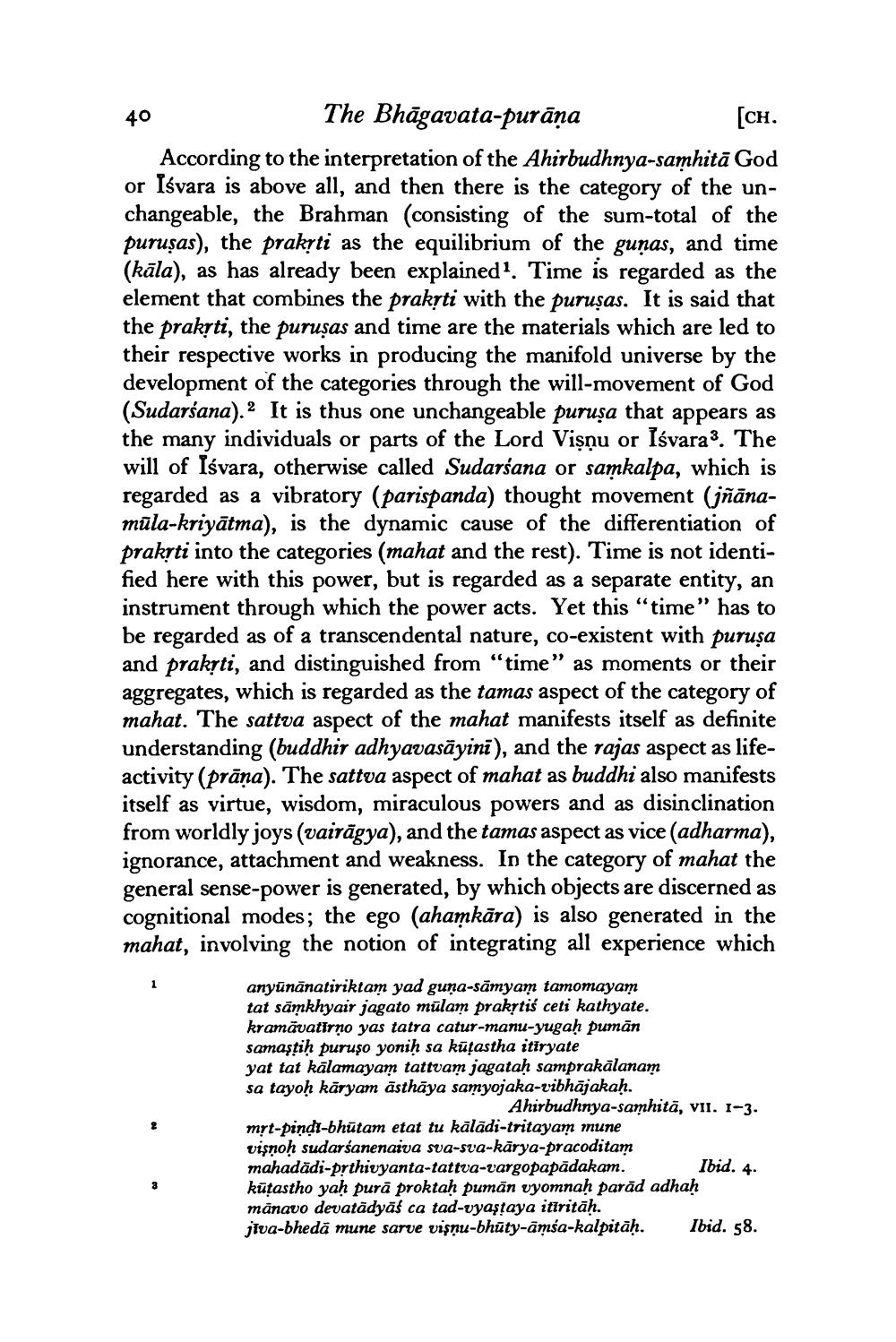________________
40
The Bhāgavata-purāņa
[CH. According to the interpretation of the Ahirbudhnya-samhitā God or Isvara is above all, and then there is the category of the unchangeable, the Brahman (consisting of the sum-total of the puruşas), the prakrti as the equilibrium of the gunas, and time (kāla), as has already been explained. Time is regarded as the element that combines the praksti with the puruṣas. It is said that the prakyti, the purusas and time are the materials which are led to their respective works in producing the manifold universe by the development of the categories through the will-movement of God (Sudarśana). It is thus one unchangeable puruşa that appears as the many individuals or parts of the Lord Vişņu or Iśvara3. The will of Isvara, otherwise called Sudarśana or samkalpa, which is regarded as a vibratory (parispanda) thought movement (jñānamūla-kriyātma), is the dynamic cause of the differentiation of prakyti into the categories (mahat and the rest). Time is not identified here with this power, but is regarded as a separate entity, an instrument through which the power acts. Yet this "time" has to be regarded as of a transcendental nature, co-existent with puruşa and prakyti, and distinguished from "time" as moments or their aggregates, which is regarded as the tamas aspect of the category of mahat. The sattva aspect of the mahat manifests itself as definite understanding (buddhir adhyavasāyini), and the rajas aspect as lifeactivity (prāna). The sattva aspect of mahat as buddhi also manifests itself as virtue, wisdom, miraculous powers and as disinclination from worldly joys (vairāgya), and the tamas aspect as vice (adharma), ignorance, attachment and weakness. In the category of mahat the general sense-power is generated, by which objects are discerned as cognitional modes; the ego (ahamkāra) is also generated in the mahat, involving the notion of integrating all experience which
anyūnānatiriktam yad guna-sāmyam tamomayam tat sāmkhyair jagato mūlam praktiś ceti kathyate. kramăvatirņo yas tatra catur-manu-yugah pumān samaştih puruso yonih sa kūțastha itiryate yat tat kālamayam tattvam jagatah samprakalanam sa tayoh kāryam āsthāya samyojaka-vibhājakaḥ.
Ahirbudhnya-samhitā, vii. 1-3. mrt-pindi-bhūtam etat tu kālādi-tritayam mune vişnoh sudarśanenaiva sva-sta-kārya-pracoditam mahadādi-pythivyanta-tattva-vargopapadakam. Ibid. 4. kūțastho yah purā proktah pumān vyomnah parād adhah mänavo devatādyāś ca tad-vyaştaya itiritāḥ. jiva-bhedā mune sarve vişnu-bhūty-āmsa-kalpitāḥ. Ibid. 58.




